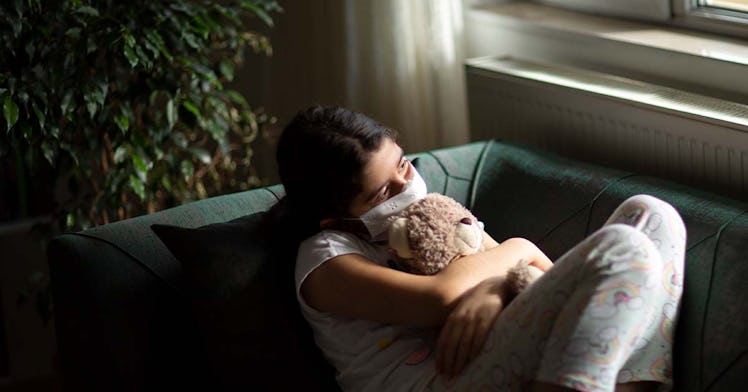COVID-19 Is About to Become A Disease That’s Mostly for Kids
Most of the kids will be okay — and it's a sign vaccinations are on the right path.

Kids’ share of COVID-19 cases is the highest it’s ever been in the US, recently topping 20 percent of all cases, according to a report from the American Academy of Pediatrics and the Children’s Hospital Association. This number may seem scary, but it’s actually good news.
Because more than half of all adults have received at least one dose of the COVID-19 vaccine, they’re getting sick less often. Kids don’t have access to the vaccine yet and won’t for months, so their share of cases will continue to rise even if the total number of kids getting the disease doesn’t.
In fact, the total number of kids testing positive for the coronavirus is fairly low right now. About 88,000 children were diagnosed with COVID-19 during the week ending April 15, according to the report. In comparison, kids’ cases spiked at more than 200,000 per week in January.
More than 3.6 million kids in the US have been diagnosed with COVID-19 since the start of the pandemic. But child hospitalization and mortality rates remain low. In all states reporting, 0.03 percent or less of kids with COVID-19 died last week. “For the average kid, COVID is a negligible risk,” Aaron Richterman, an infectious disease specialist at the University of Pennsylvania, told the New York Times.
“I do think of it as on par with the risk from flu,” Stephen Kissler, a researcher at Harvard’s T.H. Chan School of Public Health, told the Times. For children aged 1-17, COVID-19 was the 10th biggest killer in 2020. Influenza ranked number seven for kids the year prior, although COVID-19 killed more than 16 times as many adults than the flu did.
Apart from infection, everyday risks to kids are also higher than the risk of COVID-19. Drowning kills twice as many kids per year than the coronavirus, and car accidents kill five times as many. “If protecting children from small but real risks of serious harm were society’s top goal, keeping children away from pools and cars would probably have a bigger effect than isolating them in coming months,” wrote Times COVID-19 reporter David Leonhardt.
The vaccines are only approved for people age 16 and older right now. Tweens and teens may have to wait until the start of the school year or later to get their shot, and younger kids may not be eligible until early 2022. After that, their share of the COVID-19 burden should decline.
This article was originally published on